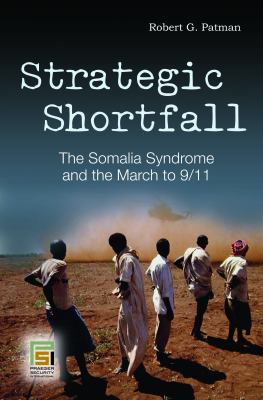
Book
|
Strategic shortfall : the Somalia syndrome and the march to 9/11
Copies
2 Total copies, 2 Copies are in,
0 Copies are out.
Title
Strategic shortfall : the Somalia syndrome and the march to 9/11
Call No
DT407.42
Authors
Subjects
Language
English
Published
Santa Barbara, Calif. : Praeger Security International, ©2010.
Publication Desc
xvii, 185 p. : ill., maps ;
ISBN
9780275993627
(hardcover : alk. paper)
LCCN
2009053922
Dimensions
25 cm.









